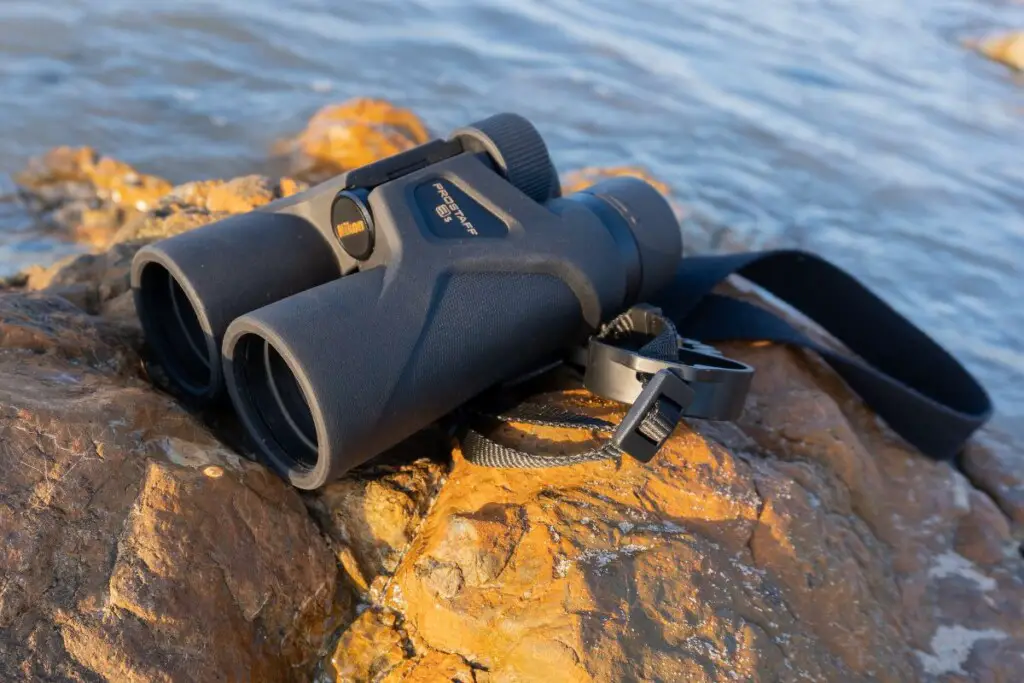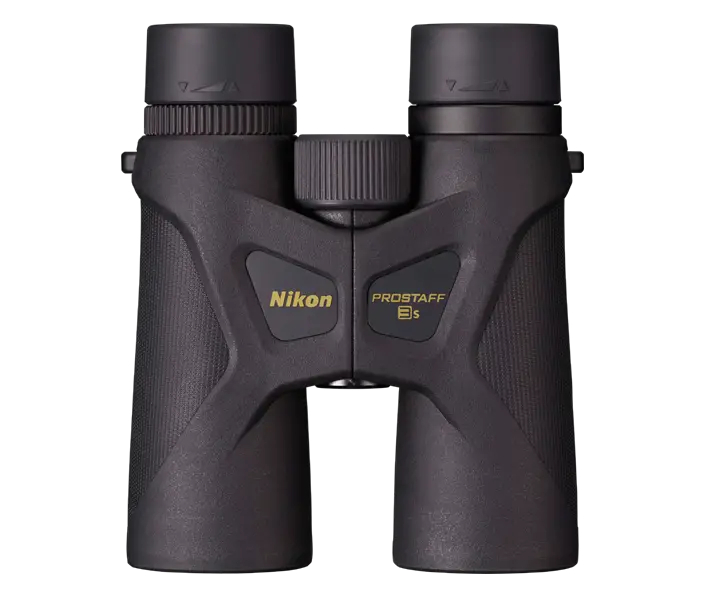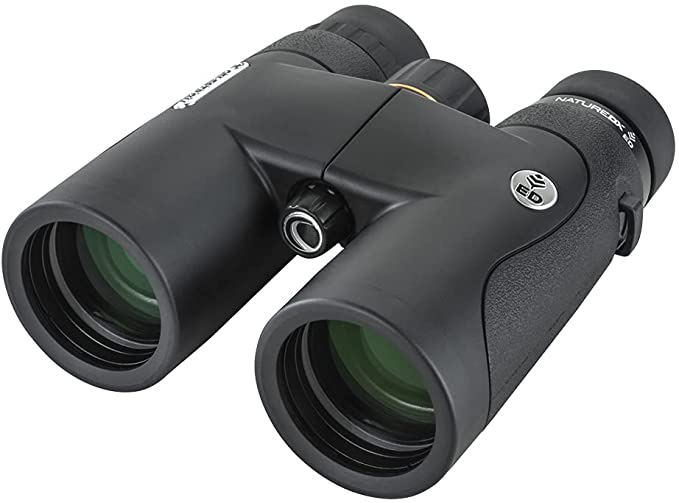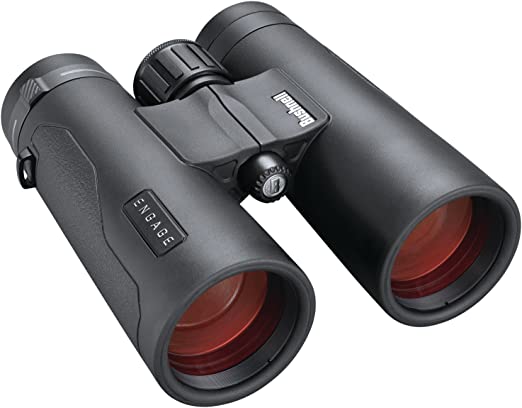It can be confusing when you are considering purchasing your first pair of binoculars; there are a lot of terms within their specifications that are confusing. I have spent a lot of time researching binoculars both for purchasing and for my blog articles. In this post, I am going to use my knowledge to explain all the terms you need to understand.
What you learn in this article will make the process of purchasing binoculars much more enjoyable. You will understand everything listed in the specifications and be able to make a more informed decision. I will also give you some recommendations for some great binoculars.

- 1. The Numbers – Magnification And Objective Lens Diameter
- 2. Exit Pupil – Width Of Light That Reaches Your Eyes
- 3. Field Of View – Width Of The Area You See
- 4. Eye Relief – Distance From The Lenses To The Exit Pupil
- 5. Close Focusing Distance – Closest The Binoculars Can Focus
- 6. Interpupillary Distance – Distance Between Your Pupils
- 7. Relative Brightness – Compares The Brightness Of Binoculars
- 8. Twilight Factor – Effectiveness In Low Light Conditions
- 9. Prism Type – Internal Placement Of The Lenses
- 10. ED Glass – Extra-Low Dispersion Glass
- 11. Chromatic Aberration – Color Distortion In The Image
- 12. Rubber Armor – Coating On The Body Of The Binoculars
- 13. Diopter – Adjusts The Focus For Differences In Your Eyes
- 14. Adjustable Eyecups – Place Your Eyes Relative To The Lenses
- 15. Waterproof – The Binoculars Can Get Wet
- 16. Water Resistant – Don’t Get Them Too Wet!
- 17. Nitrogen/Argon Purged – Prevents Internal Fogging
- 18. IPX7 Waterproof Rating – Rates How Waterproof They Are
- 19. Bak-4 Prisms – The Glass Of The Internal Prisms
- 20. Phase Coated – A Coating That Helps With Light Transmission
- 21. Limiting Stellar Magnitude – Visibility Of The Night Sky
- Binocular Recommendations
- Conclusion
- References
1. The Numbers – Magnification And Objective Lens Diameter
Each binocular has two numbers listed on it separated by an x; for example, 8×42.
The first number is the magnification factor and it is paired with the x. If it is 8x, this means the binoculars will make everything 8 times larger than the naked eye.
The second number is the diameter of the objective lenses (the lenses closest to the object you are viewing) in millimeters. In the case of a pair of 8×42 binoculars, the objective lenses are 42 mm in diameter.
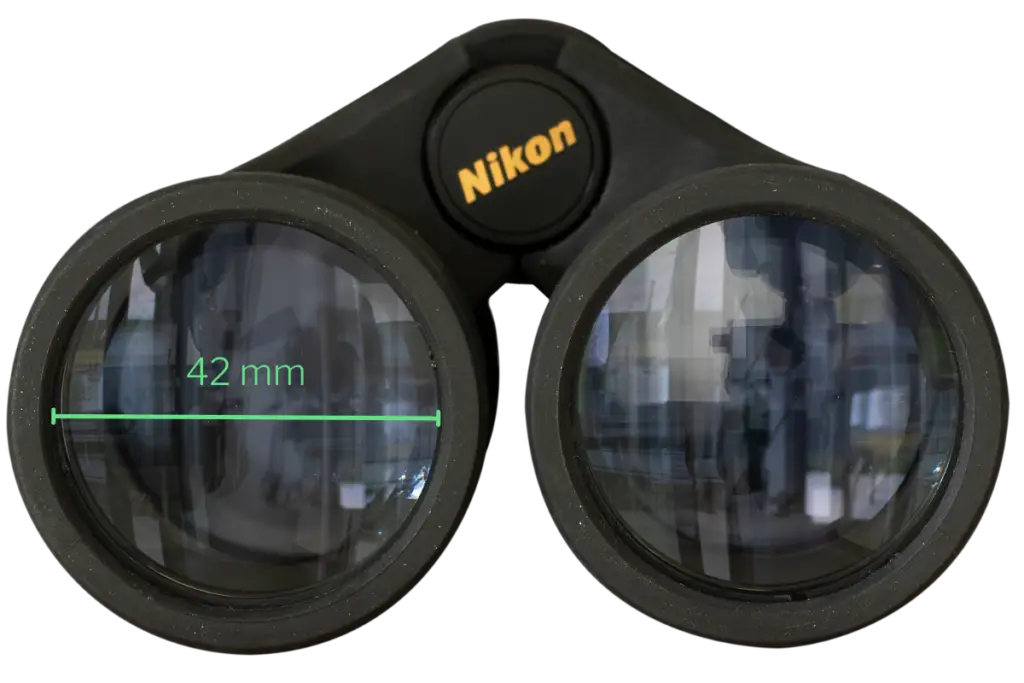
Why The Numbers Are Important
Firstly, you want to know how much larger your binoculars are going to make your subject appear. Secondly, too much magnification can be a bad thing as it narrows the field of view and will make the image shaky.
The larger the objective lenses, the more light they will let in. This gives you a brighter image but also increases the size and weight of the binoculars as you get up to higher numbers.
2. Exit Pupil – Width Of Light That Reaches Your Eyes
The exit pupil is the width of the circle of light that reaches your eyes from the ocular lenses (those closest to your eyes). Exit pupil is calculated by diving the diameter of the objective lenses by the magnification. For example 42÷8 = 5.25 mm.
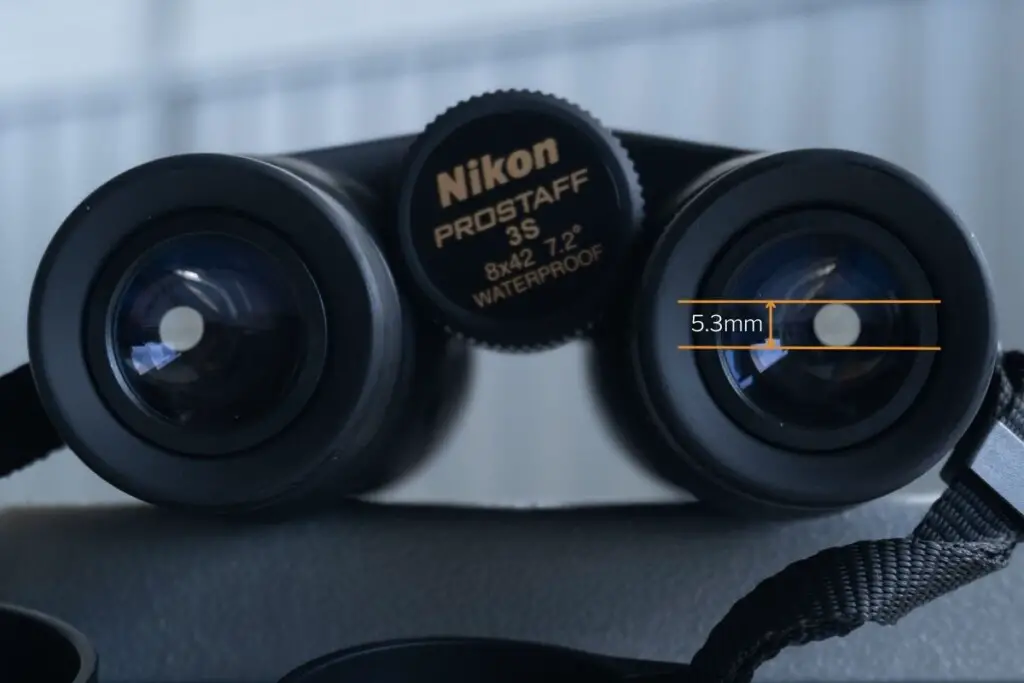
Why Exit Pupil Is Important
The larger the exit pupil is, the better your binoculars will perform under low-light conditions.
3. Field Of View – Width Of The Area You See
The linear field of view is the width of the area that you can see through the binoculars. Linear field of view is listed either in feet at 1000 yards or meters at 1000 meters. For example 377ft @ 1000 yards.
Angular field of view is a measurement of the field of view in degrees.

Why Field Of View Is Important
Field of view is important because it tells you how wide the view through your binoculars will be. A greater magnification will yield a narrower field of view.
4. Eye Relief – Distance From The Lenses To The Exit Pupil
Eye relief is a measurement of the distance from the ocular lenses to the point where the exit pupil forms. It is the point at which you can see the full field of view.
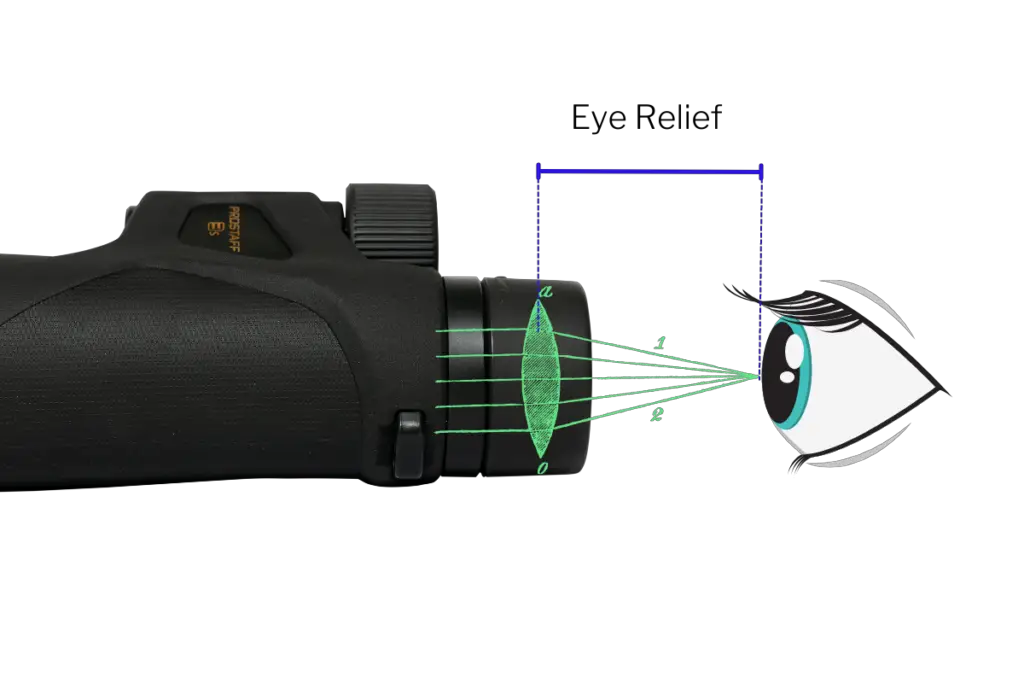
Why Eye Relief Is Important
This measurement is important for people who wear glasses while using their binoculars. If you wear glasses you want to get a pair that has at least 15 mm of eye relief.
5. Close Focusing Distance – Closest The Binoculars Can Focus
The close focusing distance, sometimes listed as minimum focusing distance, is the range at which the binoculars can achieve focus. This means if an object is 2 meters away but the minimum focusing distance of your binoculars is 3 meters, you will not be able to focus on that object.

Why Close-Focusing Distance Is Important
Close focusing distance is important if you plan to use your binoculars to view things that might be close up. For example, you may frequently go birdwatching in an area with thick foliage where the birds can often be close to you.
6. Interpupillary Distance – Distance Between Your Pupils
Each pair of binoculars will list an interpupillary distance. This is a measurement of the distance between the pupils of your eyes. To measure this, you need someone to place a ruler up to your eyes while you look straight ahead.
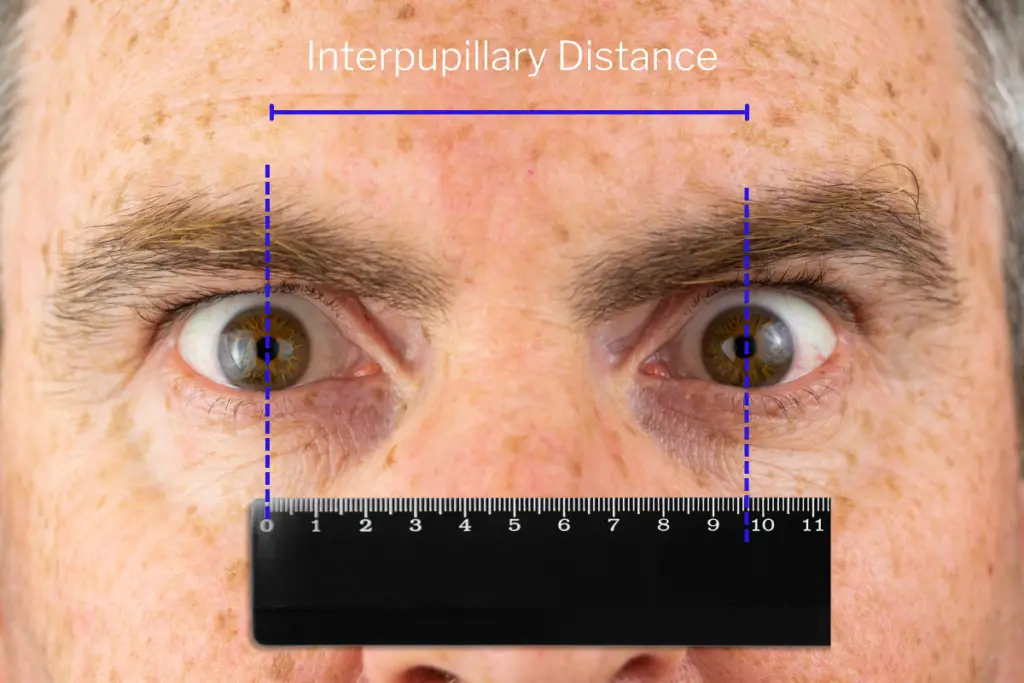
Why Interpupillary Distance Is Important
Some people have eyes that are set close together and others have eyes set wide apart. It is important to know the interpupillary distance of binoculars so you know if they are suitable for your eyes.
7. Relative Brightness – Compares The Brightness Of Binoculars
Relative brightness is a value that compares the brightness of different binoculars. The higher the number, the brighter the image through the binoculars will be. It is calculated by squaring the measurement of the exit pupil in millimeters.
For example, a pair of 8×42 binoculars will have a 5.25 mm exit pupil. 5.252 = 27.56. A pair of 10×42 binoculars have an exit pupil of 4.2 mm. 4.22 = 17.64.

Why Relative Brightness Is Important
This value is important because it gives you an idea of how bright the image through your binoculars will be.
8. Twilight Factor – Effectiveness In Low Light Conditions
The twilight factor is a measurement of how well binoculars perform in low-light conditions. The larger the number, the better they will perform. This is calculated by multiplying the size of the objective lenses by the magnification and then finding the square root of the result.
If we want to calculate this for a pair of 8×42 binoculars, the sum would be as follows:
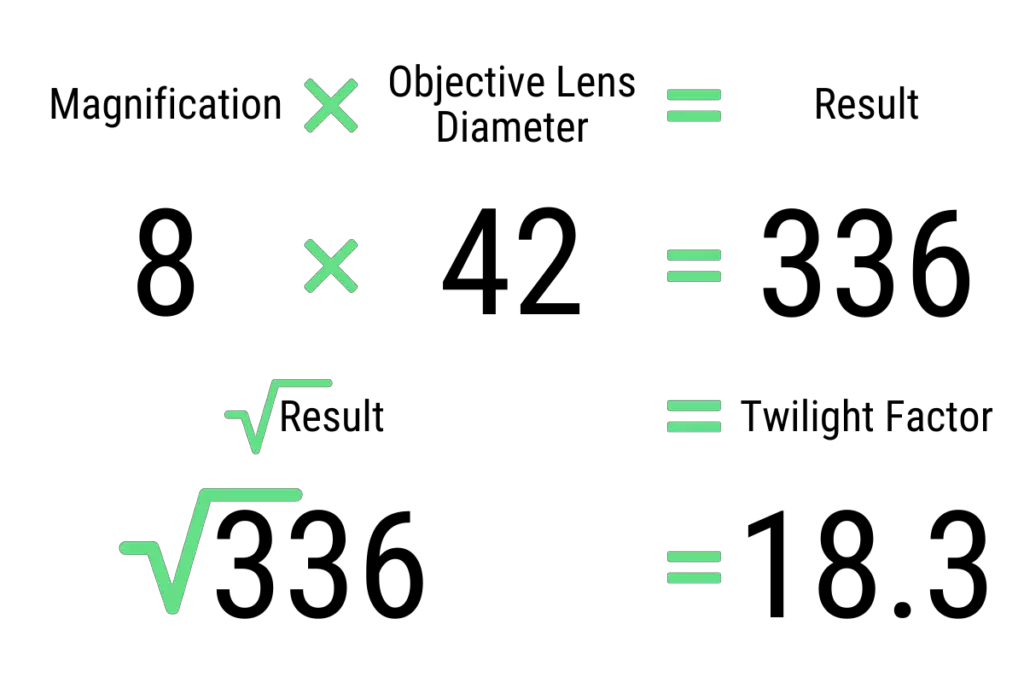
Why Twilight Factor Is Important
Often you will use your binoculars in low-light conditions, such as dawn or dusk. This is especially true with birdwatching as birds are most active during these hours.
Knowing the twilight factor of a pair of binoculars helps you understand how they will perform in low light.
9. Prism Type – Internal Placement Of The Lenses
The prism type refers to the type of internal glass elements within the binoculars that refract light. There are two types of prisms: Roof and Porro.
Binoculars with Porro prisms are the “army-style” ones we are used to seeing in the movies. Roof prism binoculars are a more compact design.

Why The Prism Type Important
Prism type matters as Porro prism binoculars are heavier, bulkier, and generally not waterproof. Roof prism binoculars are lighter, compact, and in many cases completely weather-sealed.
10. ED Glass – Extra-Low Dispersion Glass
ED glass refers to the glass used in the lenses. It stands for extra-low dispersion. It is a special type of glass that contains rare earth compounds that reduce chromatic aberration.
ED glass will reduce the color fringing effect such as that seen in the image below:
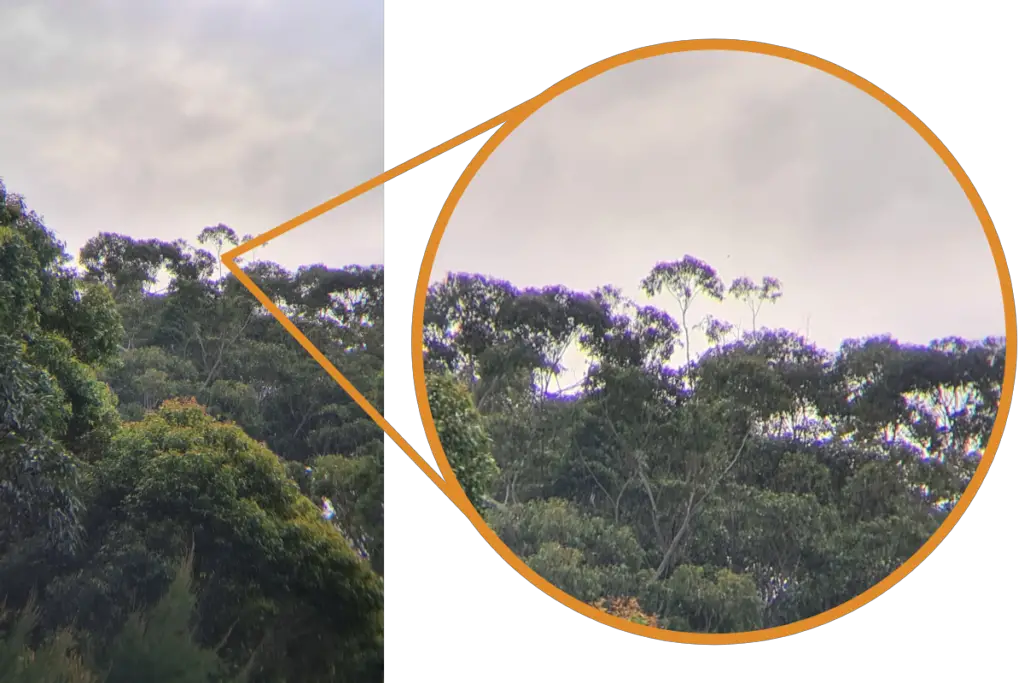
Why ED Glass Is Important
ED glass is not necessary but binoculars equipped with it will give you a sharper image with less color fringing.
11. Chromatic Aberration – Color Distortion In The Image
Chromatic aberration is a term you may come across when shopping for binoculars. As mentioned above, it is a color fringing that appears near the edges of objects when viewed through your binoculars.
This is caused by the different wavelengths of light not coming together at the same focal point after passing through your binoculars. All lenses have some form of chromatic aberration, it is less obvious in more expensive glass.
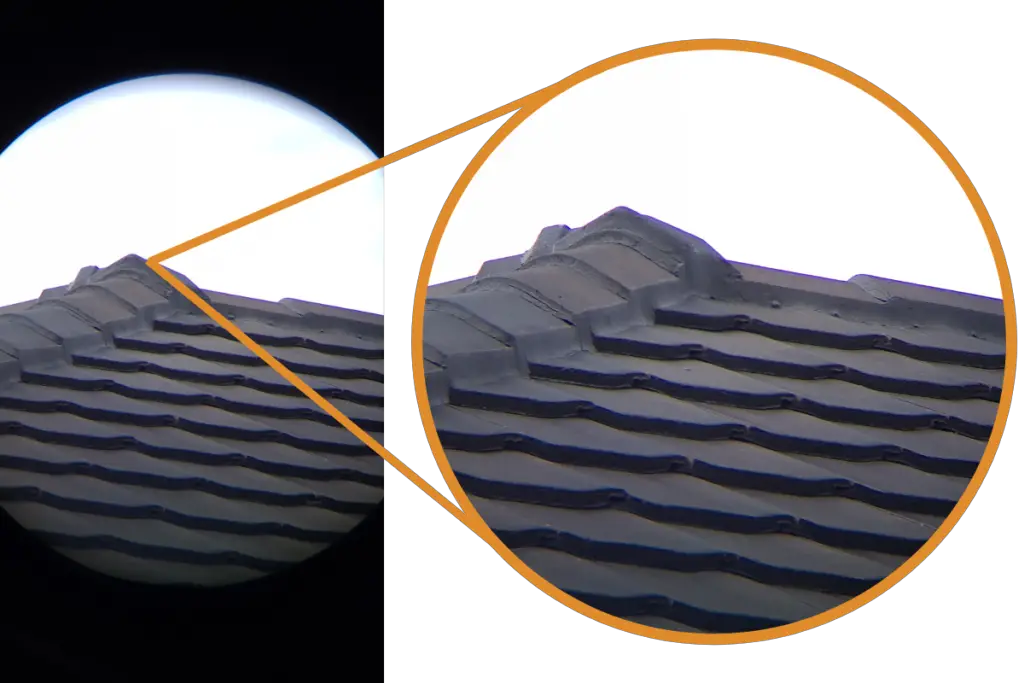
You can see magenta fringing in the image above where the roof line meets the bright sky. This image was taken through my pair of Nikon Prostaff 3S Binoculars.
Why Chromatic Aberration Is Important
Chromatic aberration is something that is either going to bother you or not. If you want a clearer image through your binoculars then you will want a pair with ED glass. Just be aware that you are going to pay more for binoculars with ED glass lenses.
12. Rubber Armor – Coating On The Body Of The Binoculars
Rubber armor refers to the coating that is around the body of the binoculars. Good-quality optics will be made from some sort of metal and then coated in this rubber armor.
The image below shows the rubber armor on my Nikon Prostaff 3S 8×42 binoculars:
Why Rubber Armor Is Important
Having binoculars with rubber armor coating makes them easier to grip. Even in wet conditions, the rubber armor provides a stable gripping surface.
13. Diopter – Adjusts The Focus For Differences In Your Eyes
The diopter is a dial on the binoculars that adjusts the focus of one side of the optics. This is to compensate for the difference in visual acuity. It is usually marked with a +/- symbol. In the specifications, it may be listed as ±3 for example.
Even if you have 20/20 vision, your eyes still distinguish shapes and details slightly different from each other. Using binoculars exaggerates these differences.

Why Is A Diopter Important
Without the diopter, you would likely get a headache from using your binoculars. This is because your eyes would be straining to try and correct the difference in the image from one eye to the other.
14. Adjustable Eyecups – Place Your Eyes Relative To The Lenses
A lot of binoculars have adjustable eyecups. They can be twisted outwards or inwards to allow you to place your eyes at an optimal distance from the ocular lenses. This helps people with deep-set eyes or those who wear glasses.
The image below shows the adjustable eyecup positions on my Nikon Prostaff 3S 8×42 binoculars:
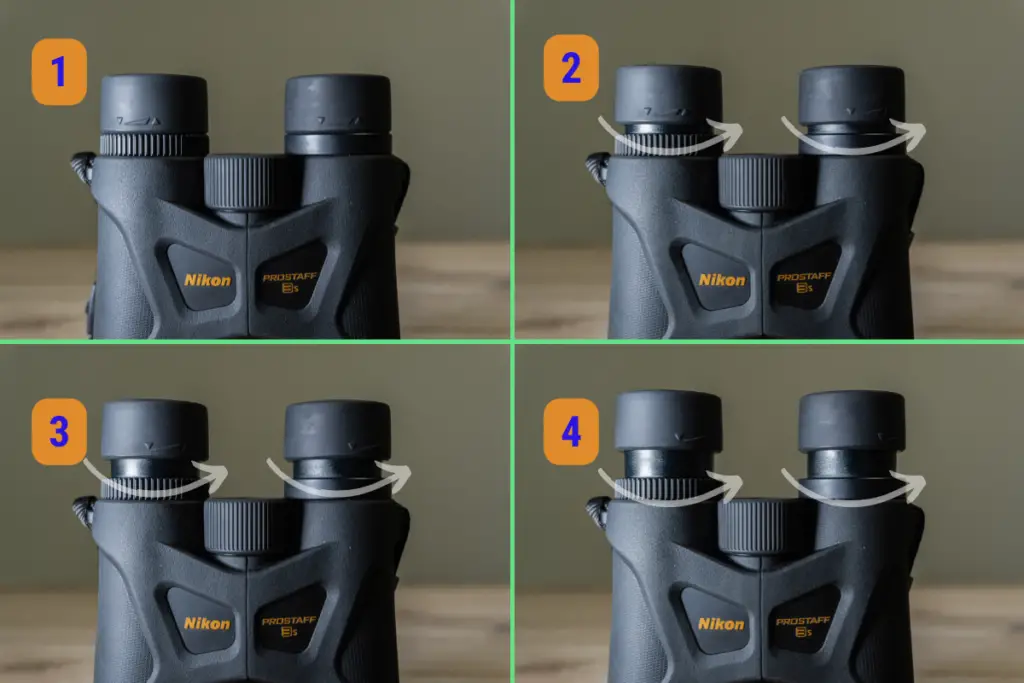
Why Adjustable Eyecups Are Important
The adjustable eyecups allow different users to dial in an optimal field of view. Without this adjustment, what you see through the binoculars may be diminished.
15. Waterproof – The Binoculars Can Get Wet
If the binoculars list waterproof as one of the features, this usually means they can safely be immersed in water for a short time. There are different levels of waterproofness so be careful to find out how waterproof they are.
Waterproof binoculars are designed to totally exclude water. You can drop them in a stream or puddle and not be concerned about ruining them.
Watch the video below to see me immerse my Prostaff 3S in water:
Why Waterproofness Is Important
Your binoculars must be waterproof as there may be times you will use them in the rain. You may also accidentally drop them into the water at some stage and it’s good to know they won’t be ruined if you do so.
16. Water Resistant – Don’t Get Them Too Wet!
Water-resistant is a different specification from waterproof. Water-resistant optics have tiny openings that can allow water to enter. These binoculars are designed to resist surface water such as splashing or condensation. You DO NOT want to immerse these types of binoculars into water.
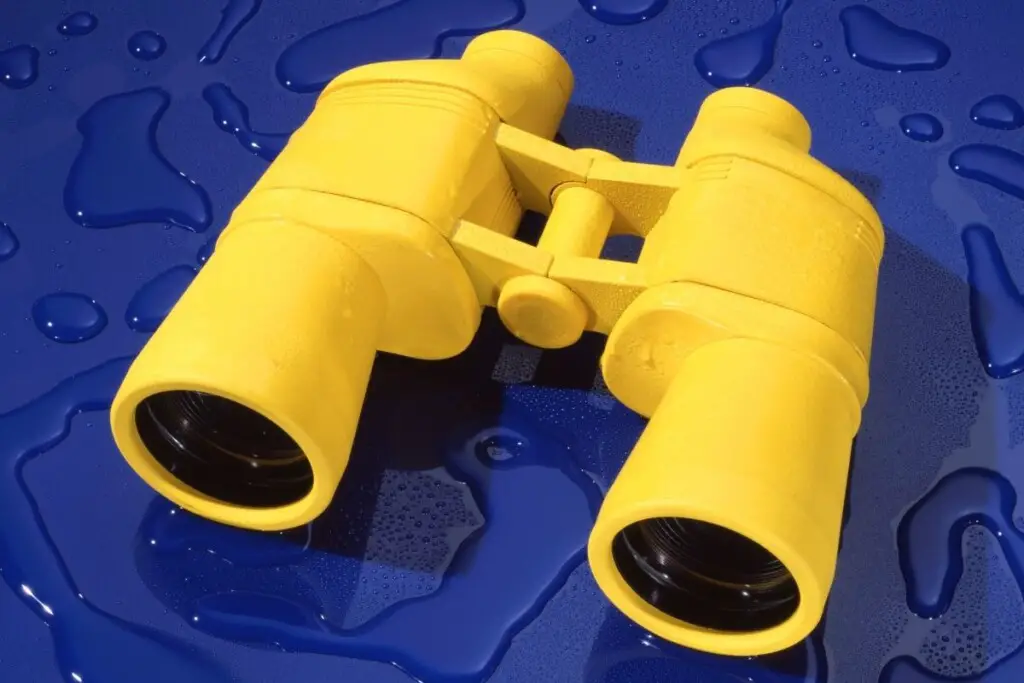
Why Water-resistant Is Important
Knowing if binoculars are waterproof or water-resistant is extremely important. It’s the difference between drying a pair off and throwing them in the bin.
17. Nitrogen/Argon Purged – Prevents Internal Fogging
To prevent the lenses of binoculars from fogging, they are filled with nitrogen or argon. It is more common these days to find nitrogen-filled optics rather than argon. This can be listed in the specifications as nitrogen purged or nitrogen filled.
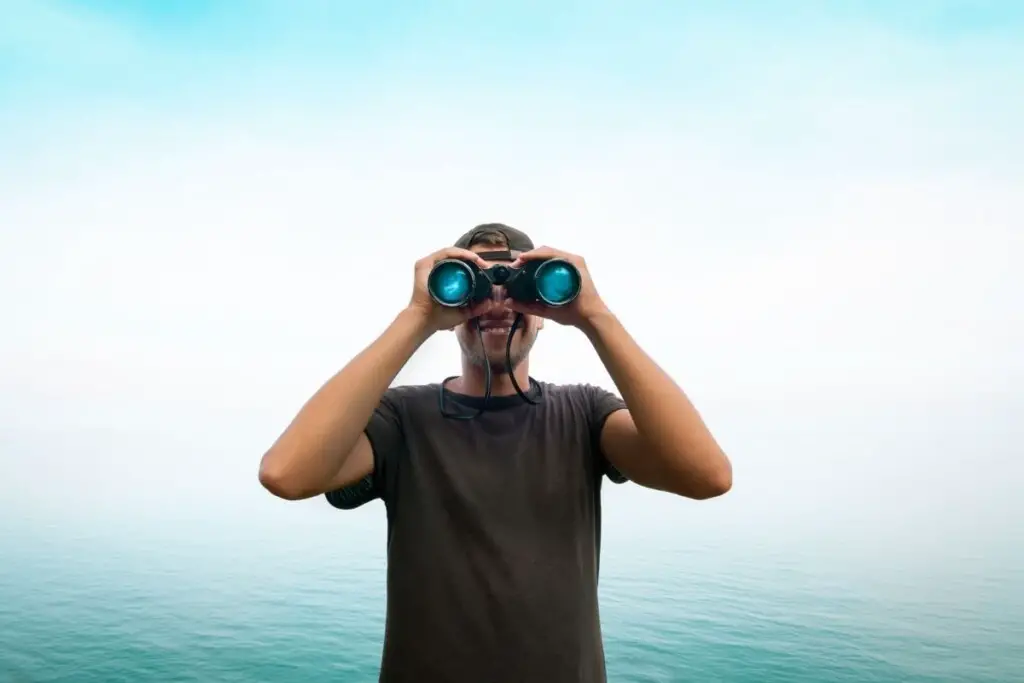
Why Nitrogen Or Argon Filled Is Important
This makes your viewing experience more enjoyable as you are not stopping to defog your lenses all the time. In addition, moisture inside the binoculars can lead to mold growth which ruins your optics.
18. IPX7 Waterproof Rating – Rates How Waterproof They Are
An IP rating stands for Ingress Protection. This is a scale for rating how well an optic is protected from liquids and solids. IPX ratings measure waterproofness.
An IPX7 rating indicates that the binoculars can be immersed up to 1 meter deep in water for 30 minutes.

Why An IPX7 Rating Is Important
Your binoculars don’t need to have an IPX7 rating. If they do, however, you can rest assured that they will survive being dropped in the river.
Other IPX ratings can be found on the Jabra blog.
19. Bak-4 Prisms – The Glass Of The Internal Prisms
BaK-4 refers to the glass used to manufacture the prisms of binoculars. In this case, it is a light barium crown glass that enhances contrast, resolution, and light transmission.
There is also BK-7 glass which is less expensive and therefore found in cheaper binoculars. It is a type of borosilicate glass. You may also come across K9 prisms which are also of lesser quality.

Why BaK-4 Prisms Are Important
BaK-4 prisms provide a superior image to BK-7 or K9 prisms. The exit pupil of BK-7 or K9 prisms is not always perfectly round which can cause clarity issues on the edges of the image. BaK-4 prisms produce a perfectly round exit pupil.
20. Phase Coated – A Coating That Helps With Light Transmission
Phase coating is an optical coating applied to the surface of certain parts of a lens. It has the effect of slowing the transmission of light through the section of the lens that has a shorter light path. This brings all of the light rays into phase so they meet at the same point when they rejoin.
This has the effect of producing better color production, meaning you see more color detail in shadowy areas.
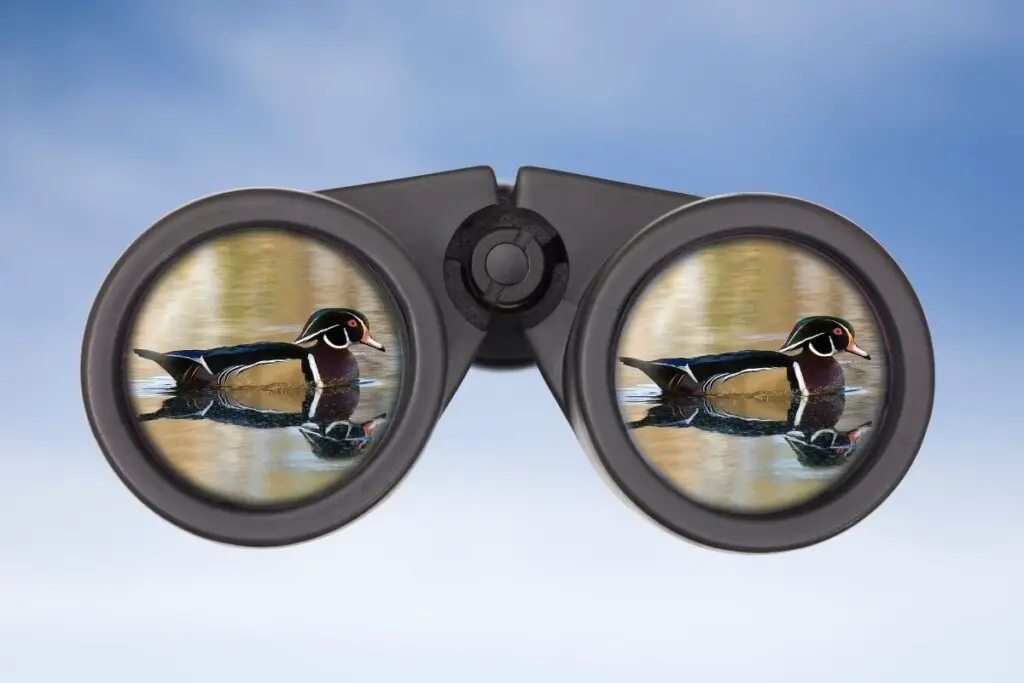
Why Phase Coating Is Important
The picture you see is going to be much better through binoculars with phase coating. There are other types of coatings too, see this article by Celestron for more information.
21. Limiting Stellar Magnitude – Visibility Of The Night Sky
Limiting stellar magnitude is a specification that lets you know the faintest object your binoculars will view in the night sky. The numbers are based on the scale of stellar magnitude; used by astronomers to measure the brightness of celestial bodies viewed under zero light pollution.
The brighter the object, the lower the number. The Sun for example is a magnitude of -26.7. Sirius, the brightest star in the night sky is a magnitude of -1.4.
The binocular specifications may list three levels of limiting stellar magnitude: ideal, moderate, and poor.

Why Limiting Stellar Magnitude Is Important
Limiting stellar magnitude gives you an accurate idea of what you will be able to see through your binoculars when viewing the night sky. If you are a stargazer, this is information you will want to know.
Binocular Recommendations
Nikon Prostaff 3S 8×42
I have already mentioned the binoculars that I use, the Nikon Prostaff 3S 8×42. These are a really good pair of optics for the price you pay for them. At the time of writing this article, they were priced at USD126.95 on Amazon.
For more information about these binoculars, read my article Nikon Prostaff 3S 8×42 – Are They Good Binoculars For Birding? There is also a video in that article explaining all the features of the Prostaff 3S and what I like and don’t like about them.
Read the specifications for them below:
Magnification | 8x |
Objective Lens Diam. | 42 mm |
Angular F.O.V. | 7.2° |
Linear F.O.V. @1000m | 126 m |
Linear F.O.V. @ 1000ft | 378 ft |
Exit Pupil | 5.3 mm |
Relative Brightness | 28.1 |
Twilight Factor | 18.3 |
Eye Relief | 20.2 mm |
Close Focusing Distance | 3.0 m 9.8 ft |
Interpupillary Dist. Adj. | 56-72 mm 2.2-2.8 in. |
Weight | 565 g 19.9 oz |
Prism | Roof |
These are currently my top recommendation for lower-priced, lightweight binoculars. Check the latest pricing from Amazon, Adorama, and eBay via the button below:
Celestron Nature DX ED 8×42
The Celestron Nature DX ED 8×42 binoculars are a little more expensive than the Nikon Prostaff 3S but unlike the Prostaff, they have ED glass. At the time of writing this, they were selling for just USD156.32 on Amazon which is not much more than the Nikon Prostaff 3S.
Read the specifications for them below:
Magnification | 8x |
Objective Lens Diam. | 42 mm |
Angular F.O.V. | 7.5° |
Linear F.O.V. @1000m | 129 m |
Linear F.O.V. @ 1000ft | 393 ft |
Exit Pupil | 5.3 mm |
Relative Brightness | 27.56 |
Twilight Factor | 18.3 |
Eye Relief | 17.8 mm |
Close Focusing Distance | 2.0 m 6.6 ft |
Interpupillary Dist. Adj. | 56-74 mm 2.2-2.9 in. |
Weight | 705 g 24.9 oz |
Prism | Roof |
While these are heavier than the Prostaff 3S, they have the ED glass, focus closer, and have a slightly wider field of view. The button below will lead you to a page where you can check the latest pricing from Amazon, Adorama, or B&H:
Bushnell Engage EDX 8×42
Bushnell makes really good optics. I used a pair of Bushnell Legacy 8x24s for many years before upgrading to the Prostaff and they were really well-built and handled some rough treatment.
The Bushnell Engage EDX 8×42 binoculars have ED glass, a wider field of view than the Nikon Prostaff and Celestron Nature DX, IPX7 waterproofing, and come with a lifetime warranty.
Read the specifications for them below:
Magnification | 8x |
Objective Lens Diam. | 42 mm |
Angular F.O.V. | 8.1° |
Linear F.O.V. @1000m | 142 m |
Linear F.O.V. @ 1000ft | 426 ft |
Exit Pupil | 5.3 mm |
Relative Brightness | 27.56 |
Twilight Factor | 18.3 |
Eye Relief | 17 mm |
Close Focusing Distance | 1.8 m 6 ft |
Interpupillary Dist. Adj. | ? |
Weight | 666 g 23.5 oz |
Prism | Roof |
Check the latest price of the Bushnell Engage EDX 8×42 binoculars from Amazon, B&H, or eBay via the buttons below:
Conclusion
That covers a lot of the specifications that you may come across when shopping for binoculars. This article will be updated regularly to include the most current specs.
For more reading about binoculars, take a look at these Birdwatch World articles:
- Binocular Magnification Chart For Birders With Easy Explanations
- What Do Birdwatchers Need? – The ultimate beginner’s guide
- Nikon Prostaff 3S 8×42 – Are they good binoculars for birding?

